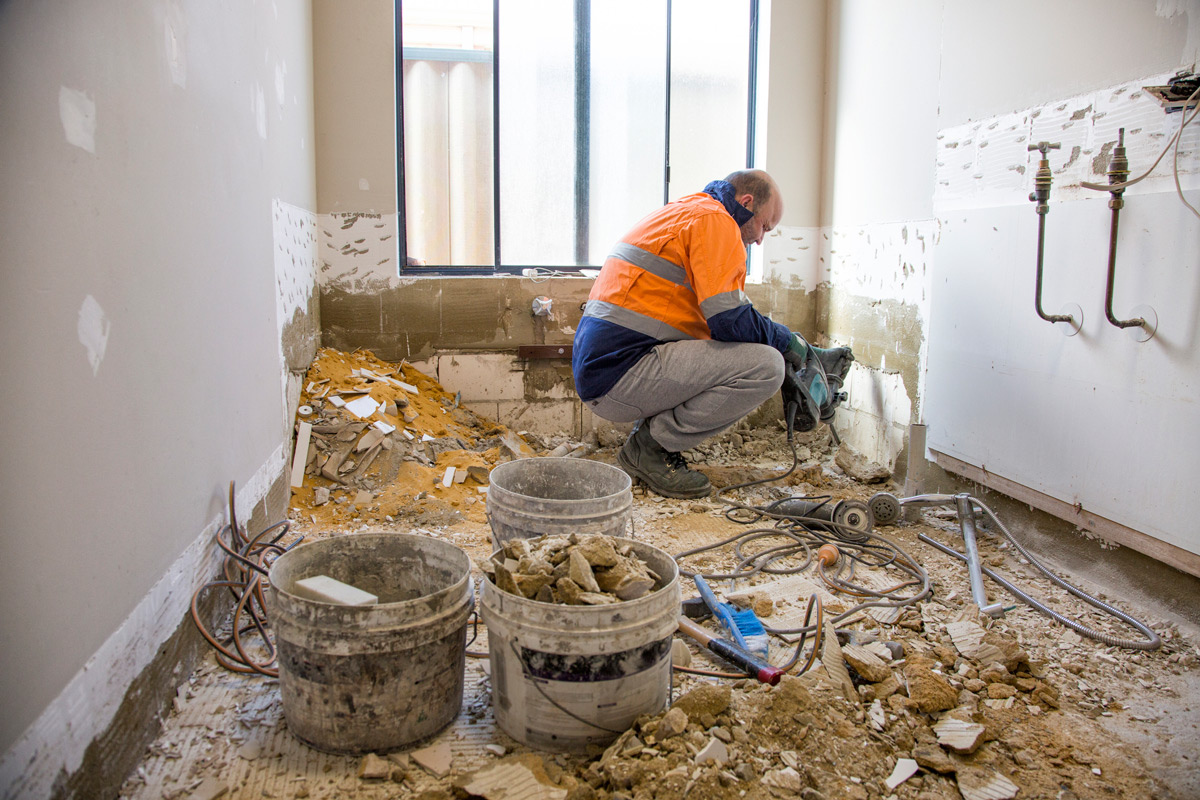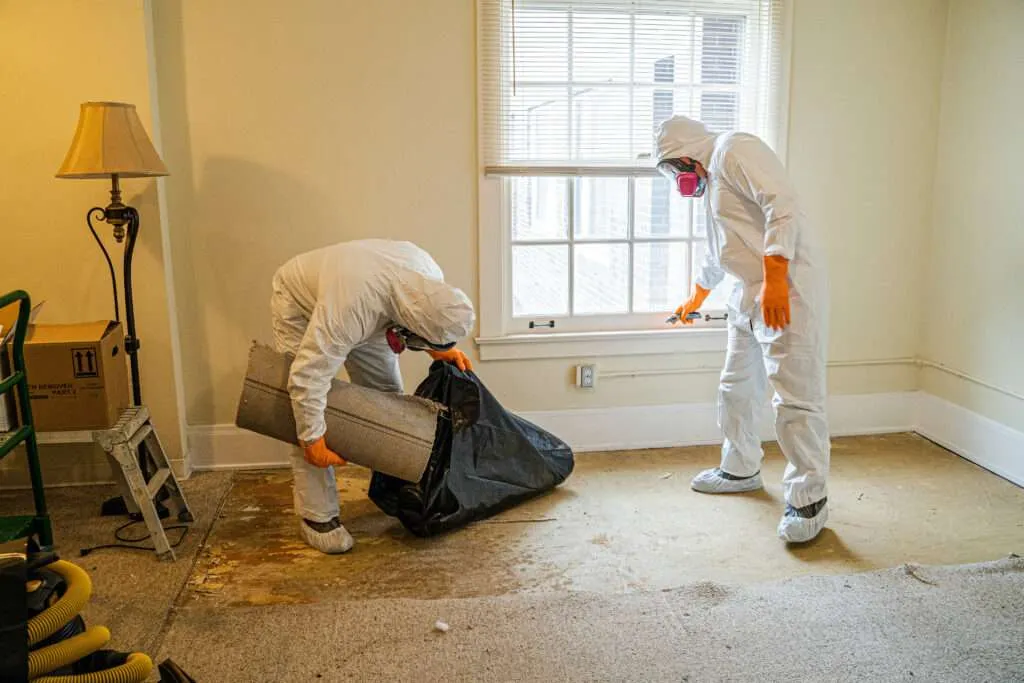All About Water Damage Remediation: Key Truths and Benefits You Need To Know
Water damage restoration is an important procedure that every property owner need to comprehend. It includes examining the kind of damages, whether tidy, grey, or black water, and carrying out a systematic reconstruction technique. Acknowledging the indications of water damages early can considerably influence the effectiveness of the remediation. Comprehending the steps entailed and the relevance of timely action can stop additional problems. What elements should homeowners take into consideration when making a decision in between specialist solutions and DIY methods?
Recognizing Water Damage: Kinds and Triggers
What elements add to water damage, and how can they be categorized? Water damage can be classified right into three primary classifications: clean water, grey water, and black water. Tidy water originates from sources like broken pipelines or rainwater, posturing marginal wellness threats. Gray water, which might come from home appliances like dish washers or washing machines, contains impurities that call for mindful handling. Black water, originating from sewer or flooding, postures significant carcinogen and demands instant interest.
The root causes of water damage vary. Usual aspects include pipes failures, roofing system leakages, natural calamities, and inadequate drain systems. In addition, human errors, such as leaving taps running or stopping working to maintain devices, can worsen the problem. Recognizing these types and causes is important for reliable avoidance and removal approaches, ensuring that homeowner can take proactive measures to protect their homes versus the damaging impacts of water damages.
Signs of Water Damage: Exactly How to Identify Problems Early
How can one identify the very early indicators of water damage prior to it rises into a more severe issue? Recognizing these concerns promptly can conserve house owners from comprehensive repair work. Typical signs consist of visible water discolorations on walls or ceilings, which typically look like yellowish or brown patches. One more indication is peeling off or bubbling paint and wallpaper, recommending wetness underneath the surface area. Moldy odors can also indicate hidden mold growth, a straight outcome of long term dampness. Furthermore, warping or buckling of floors might indicate excess dampness in the underlying structures. Home owners need to on a regular basis evaluate locations susceptible to water direct exposure, such as kitchens, restrooms, and cellars, for any indicators of leakage or moisture. An unexpected boost in energy costs may hint at undiscovered leaks. By identifying these early signs, individuals can take positive actions to deal with water damage before it aggravates.
The Water Damages Restoration Process: Step-by-Step

Next, the drying process begins, using air moving companies and dehumidifiers to remove wetness from wall surfaces, floorings, and individual valuables. After the area is completely dried, cleansing and sanitization occur to eliminate odors and pollutants.
Lastly, repairs and restoration work is conducted, which may consist of changing broken products, painting, or redecorating surfaces. water damage restoration. Throughout the process, paperwork is kept for insurance coverage objectives, making specific that all activities taken are videotaped. Each step is crucial to restore the building and guarantee a safe living setting for passengers
Importance of Timely Restoration: Why Acting Quick Issues
Prompt remediation following water damages is crucial, as hold-ups can result in intensifying issues such as mold and mildew development and architectural degeneration. Water can rapidly seep into porous products, developing an optimal atmosphere for mold and mildew spores to prosper. Within 24-48 hours, mold and mildew can begin to develop, positioning wellness threats and more complicating restoration initiatives.

In addition, prolonged direct exposure to dampness can compromise the structural integrity of buildings, leading to pricey repair services and potential security threats. Acting fast not just lessens damages yet also reduces the general cost of restoration. Insurance provider typically prefer timely activity, which can help with smoother insurance claims procedures and quicker financial healing for home owners.
Eventually, focusing on timely restoration maintains residential or commercial property worth, boosts safety, and advertises a healthier living setting. For these reasons, swift action is crucial in the results of water damage, emphasizing the importance of attending to problems as quickly as they develop.
Specialist vs. DIY Remediation: Disadvantages and pros
When thinking about water damage reconstruction, homeowners commonly weigh the alternatives of specialist solutions against do it yourself approaches. Expense considerations play a substantial function, as expert restoration can be more pricey however might provide superior expertise and specialized tools. Each choice has its advantages and disadvantages, influencing both the performance and efficiency of the reconstruction process.
Expense Factors to consider
While home owners might consider both expert solutions and do it yourself approaches for water damage remediation, each alternative presents distinctive economic ramifications and benefits. Professional reconstruction solutions frequently feature higher ahead of time expenses because of proficiency, labor, and equipment. Nonetheless, they can speed up the remediation procedure, potentially minimizing further damages and connected prices. On the various other hand, DIY restoration might show up much more budget-friendly originally, as it usually entails reduced direct expenses. Property owners should factor in the capacity for blunders, which could lead to more considerable damage and higher long-term prices. Inevitably, the option in between expert and do it yourself remediation rests on the homeowner's budget plan, the intensity of the damages, and their determination to spend effort and time right into the repair process.
Experience and Equipment
A remarkable difference between expert and DIY water damage restoration lies in the know-how and equipment offered for every approach. Professionals have specialized training and experience, enabling them to examine damages accurately and execute efficient restoration methods. They make use of innovative devices, such as industrial-grade dehumidifiers and dampness detection tools, which can significantly speed up the drying procedure and stop additional difficulties like mold and mildew development. In comparison, DIY reconstruction often counts on basic home devices and methods, which might be much less efficient and can cause insufficient repair services. While do it yourself can conserve money, it additionally brings dangers, including possible carcinogen and comprehensive damages otherwise executed properly. Ultimately, selecting in between expert solutions and DIY methods depends on the seriousness of the damages and the home owner's abilities.
Advanced Techniques in Water Damage Reconstruction
Water damages repair has actually traditionally counted on basic techniques, advanced techniques see here now are currently changing the industry. Advancements such as thermal imaging technology enable repair specialists to spot concealed wetness behind wall surfaces and under floorings, making sure thorough drying out processes. Furthermore, making use of high-capacity dehumidifiers increases wetness removal, considerably decreasing the danger of mold and mildew growth.
An additional breakthrough is the execution of antimicrobial therapies, which hinder mold and microorganisms development, protecting the wellness of owners. Advanced drying devices, consisting of air movers and specialized drying out floor coverings, boosts air circulation and promotes quicker evaporation of wetness.
In addition, real-time monitoring systems now supply continuous assessments of moisture levels, making it possible for prompt interventions and optimizing remediation efforts. These you could check here advancements not only enhance the performance of water damage reconstruction however likewise contribute to much better outcomes for residential properties, lessening lasting damage and expenses connected with water-related incidents.
Preventing Future Water Damages: Tips for Homeowners
To stop future water damage, home owners need to embrace positive steps that address possible susceptabilities in their homes. Regular upkeep of downspouts, seamless gutters, and roof coverings is important; guaranteeing these are clear of particles can avoid water build-up. Homeowners must also inspect plumbing systems for leakages and replace damaged pipes without delay. Setting up sump pumps in cellars can fend off flooding throughout hefty rainfalls, while utilizing water alarms can give early discovery of leakages.
In addition, sealing doors and windows assists protect against rainfall invasion. Landscape design should route water away from the structure, employing proper grading and drain solutions. House owners could likewise think about waterproofing basements and crawl spaces to additional mitigate dangers. Ultimately, maintaining an upgraded inventory of home products can help in insurance claims should harm occur. By implementing these methods, house owners can meaningfully minimize the likelihood of water damage and safeguard their financial investments.
Regularly Asked Questions
Just How Much Does Water Damages Remediation Commonly Expense?
Water damages repair typically costs between $1,000 and $5,000, depending on the degree of the damage, the sort of materials affected, and the place. Complicated situations might surpass this array noticeably, calling for professional assessment.
Will My Insurance Coverage Cover Water Damages Remediation Expenditures?
Insurance insurance coverage for water damages repair varies by policy and conditions. Typically, homeowners' insurance policy may cover problems from sudden occurrences, however exclusions might apply. It is recommended to assess the plan details or consult with an insurance coverage agent.
For how long Does the Restoration Refine Typically Take?

What Should I Do Instantly After Uncovering Water Damages?
Upon finding water damage, one should promptly turn off the water source, get rid of valuable things from the afflicted location, and assurance proper air flow. Looking for expert support is essential for reliable damages analysis and repair.
Exist Particular Products That Are Immune to Water Damage?
Certain products, such as treated wood, concrete, and fiberglass, exhibit useful site better resistance to water damages. Furthermore, synthetic materials and water resistant coverings enhance sturdiness, supplying efficient defense versus wetness and potential deterioration over time.
Water damage can be classified right into 3 major classifications: tidy water, gray water, and black water. When considering water damage reconstruction, house owners typically evaluate the alternatives of expert solutions against DIY strategies. While homeowners may consider both specialist solutions and DIY methods for water damages restoration, each option offers unique monetary ramifications and benefits. Water damage restoration generally costs between $1,000 and $5,000, depending on the degree of the damages, the type of products influenced, and the area. Upon finding water damages, one need to instantly transform off the water source, remove important items from the affected location, and warranty appropriate air flow.